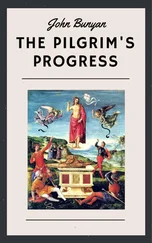John Bartlett - The Progress of Ethnology
Здесь есть возможность читать онлайн «John Bartlett - The Progress of Ethnology» — ознакомительный отрывок электронной книги совершенно бесплатно, а после прочтения отрывка купить полную версию. В некоторых случаях можно слушать аудио, скачать через торрент в формате fb2 и присутствует краткое содержание. ISBN: , Жанр: foreign_antique, foreign_prose, Историческая проза, на английском языке. Описание произведения, (предисловие) а так же отзывы посетителей доступны на портале библиотеки ЛибКат.
- Название:The Progress of Ethnology
- Автор:
- Жанр:
- Год:неизвестен
- ISBN:http://www.gutenberg.org/ebooks/35234
- Рейтинг книги:3 / 5. Голосов: 1
-
Избранное:Добавить в избранное
- Отзывы:
-
Ваша оценка:
- 60
- 1
- 2
- 3
- 4
- 5
The Progress of Ethnology: краткое содержание, описание и аннотация
Предлагаем к чтению аннотацию, описание, краткое содержание или предисловие (зависит от того, что написал сам автор книги «The Progress of Ethnology»). Если вы не нашли необходимую информацию о книге — напишите в комментариях, мы постараемся отыскать её.
The Progress of Ethnology — читать онлайн ознакомительный отрывок
Ниже представлен текст книги, разбитый по страницам. Система сохранения места последней прочитанной страницы, позволяет с удобством читать онлайн бесплатно книгу «The Progress of Ethnology», без необходимости каждый раз заново искать на чём Вы остановились. Поставьте закладку, и сможете в любой момент перейти на страницу, на которой закончили чтение.
Интервал:
Закладка:
The region which forms the subject of the memoirs just alluded to, is doubtless one of the most interesting fields for exploration of any on the African continent. The languages spoken by the several nations between the two oceans, which are here separated by a space of sixteen or seventeen hundred miles, in a direct line, are believed to belong to one great family, or at least to present such traces of affinity, that an expedition, if sufficiently strong, aided by interpreters from the Zanzibar coast or the Monomoezi tribes, might traverse the continent without difficulty. Obstacles might be thrown in the way by the Portuguese traders, who would naturally feel jealous at any encroachments by rival nations; but by a proper understanding, these might be overcome, and this interesting and hitherto unknown portion of Central Africa be laid open to commerce and civilization.
The latest attempt to explore this region was that of M. Maizan, a young officer in the French navy, who towards the close of the year 1844, set out for the purpose. In April, 1845, he left Zanzibar, furnished with a firman from Sultan Said to the principal chiefs of the tribes of the interior, though in reality they enjoyed the most complete independence. Having been warned that a chief, named Pazzy, manifested hostile intentions towards him, he stopped some time on his way, and after having acquired information relating to the country he wished to survey, he made a grand détour round the territory over which this savage chief exercised his authority. After a march of twenty days, he reached the village of Daguélamohor, which is but three days' journey from the coast in a direct line, where he awaited the arrival of his baggage, which he had entrusted to an Arab servant. This man, it appears, had communication with Pazzy, and had informed him of the route his master had taken. Pazzy, with some men of his tribe, overtook M. Maizan towards the end of July, at Daguelamohor, and surrounded the house in which he lived. After tying him with cords to a palisade, the savage ordered his men to cut the throat of their unfortunate victim. 34 34 Nouvelles Annales des Voyages: May, 1846, p. 139.
Mr. M'Queen gives some particulars obtained from a native African relating to the country between Lake Tchad, or Tshadda and Calabar. This portion of the African continent has never been visited by Europeans, and although little can be gained of its geography from the statements of this man, there is much in them that is interesting on the productions of the country, the natives, their manners, customs, &c.
The publication by the French government of the results of the great scientific expedition to Algeria has thrown much light on the districts embraced in Algiers and the regency of Tunis, as well as on the countries far in the interior. Among the subjects which have received the particular attention of the commission, are, 1. An examination of the routes followed by the Arabs in the south of Algiers and Tunis; 2. Researches into the geography and commerce of Southern Algiers, by Capt. Carette; 3. A critical analysis of the routes of the caravans between Barbary and Timbuctoo, with remarks on the nature of the western Sahara, and on the tribes which occupy it, by M. Renou; 4. A series of interesting memoirs on the successive periods of the political and geographical history of Algiers from the earliest period to the present time, by M. Pelissier; 5. The History of Africa, translated from the Arabic of Mohammed-ben-Abi-el-Raini-el-Kairouani, by M. Remusat, giving a particular account of the earliest Musselman period.
Gen. Marey in an account of his expedition to Laghouat in Algeria, published in Algiers in 1845, has contributed important information on this country, which deserves a rank with the great work of the scientific expedition. 35 35 Bulletin de la Société de Géographie de France, for 1845, p. 251.
In this work the author has corrected the erroneous opinion which has long been held, of the barrenness of the Sahara. Among the Arabs this word Sahara does not convey the idea which the world has generally given it, of a desert or uninhabitable place, but the contrary. Like every country, it presents some excellent and luxuriant spots, others of a medium quality as to soil, and others entirely barren, not susceptible of cultivation. By Sahara , the Arabs mean a country of pastures, inhabited by a pastoral people; while, to the provinces between the Atlas mountains and the sea, they apply the name of Tell , meaning a country of cereals, and of an agricultural people.
M. Carette, in his exploration of this region, has also discovered the false notion long imbibed in relation to it. "The Sahara," says he, "was for a long time deformed by the exaggerations of geographers, and by the reveries of poets. Called by some the Great Desert, from its sterility and desolation, by others the country of dates, the Sahara had become a fanciful region, of which our ignorance increased its proportions and fashioned its aspect. From the mountains which border the horizon of Tell, to the borders of the country of the blacks, it was believed that nature had departed from her ordinary laws, renouncing the variety which forms the essential character of her works, and had here spread an immense and uniform covering, composed of burning plains, over which troops of savage hordes carried their devastating sway. Such is not the nature, such is not the appearance of the Sahara."
Конец ознакомительного фрагмента.
Текст предоставлен ООО «ЛитРес».
Прочитайте эту книгу целиком, купив полную легальную версию на ЛитРес.
Безопасно оплатить книгу можно банковской картой Visa, MasterCard, Maestro, со счета мобильного телефона, с платежного терминала, в салоне МТС или Связной, через PayPal, WebMoney, Яндекс.Деньги, QIWI Кошелек, бонусными картами или другим удобным Вам способом.
1
In a paper read by Mr. Schoolcraft before the American Ethnological Society, it was clearly shown by existing remains, in Michigan and Indiana, plans of which were exhibited, that vast districts of country, now covered by forests and prairies, bear incontestable proofs of having been subject to cultivation at a remote period and before the forest had begun its growth.
2
This figure of an extended hand is the most common of all the symbols of the aboriginal tribes of America. It is found on the ancient temples, and within the tombs of Yucatan. At the earliest period it was used by the Indians, in the United States, and at the present time, it is employed by the roving bands and large tribes from the Mississippi to the Rocky Mountains, and from Texas northward.
3
"Bottoms" and "bottom lands," are terms applied to the flat lands adjoining rivers. In the State of New York they are called "flats" – as the "Mohawk flats."
4
Second Note sur une pierre gravée trouvé dans un ancien tumulus Americain, et à cette occasion, sur l'idiome Libyen, par M. Jomard. 8vo. Paris, 1846.
5
See Mr. Catherwood's paper on the Thugga monument and its inscriptions, in the Ethnolg. Trans. Vol. I. p. 477.
6
Notes on Africa. p.
7
The essay here alluded to, was the reply of Mr. Jomard to a note addressed to him by Mr. Eugene Vail, in 1839, announcing the discovery of the inscribed tablet in the Grave-creek mound, and requesting his opinion in relation to it. In this reply, Mr. Jomard stated that they were of the same character with the inscriptions found by Major Denham in the interior of Africa, as well as in Algiers and Tunis. This note was inserted in Mr. Vail's work entitled " Notice sur les Indiens de l'Amerique du Nord ." Paris, 1840. This work is scarcely known in the United States.
Читать дальшеИнтервал:
Закладка:
Похожие книги на «The Progress of Ethnology»
Представляем Вашему вниманию похожие книги на «The Progress of Ethnology» списком для выбора. Мы отобрали схожую по названию и смыслу литературу в надежде предоставить читателям больше вариантов отыскать новые, интересные, ещё непрочитанные произведения.
Обсуждение, отзывы о книге «The Progress of Ethnology» и просто собственные мнения читателей. Оставьте ваши комментарии, напишите, что Вы думаете о произведении, его смысле или главных героях. Укажите что конкретно понравилось, а что нет, и почему Вы так считаете.












